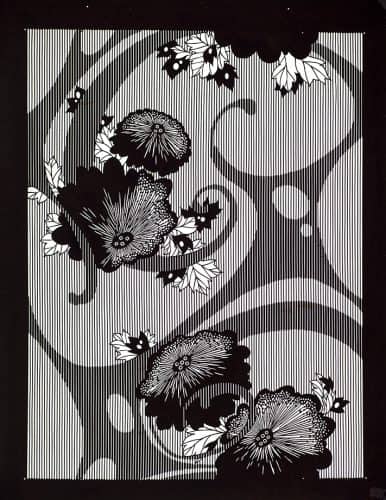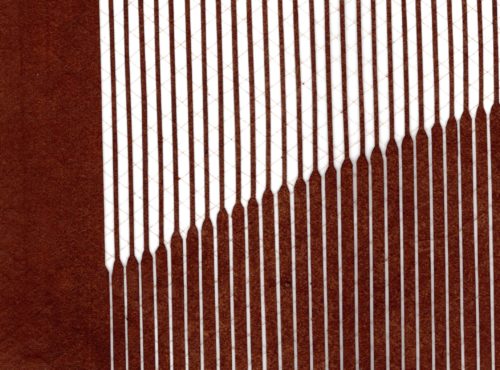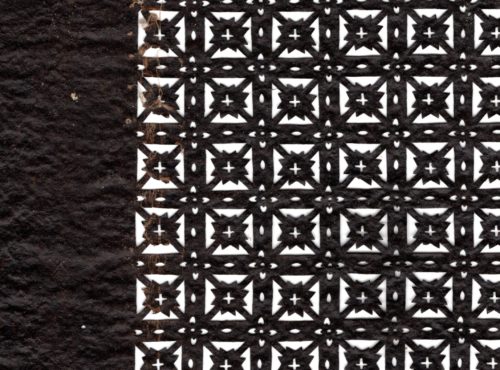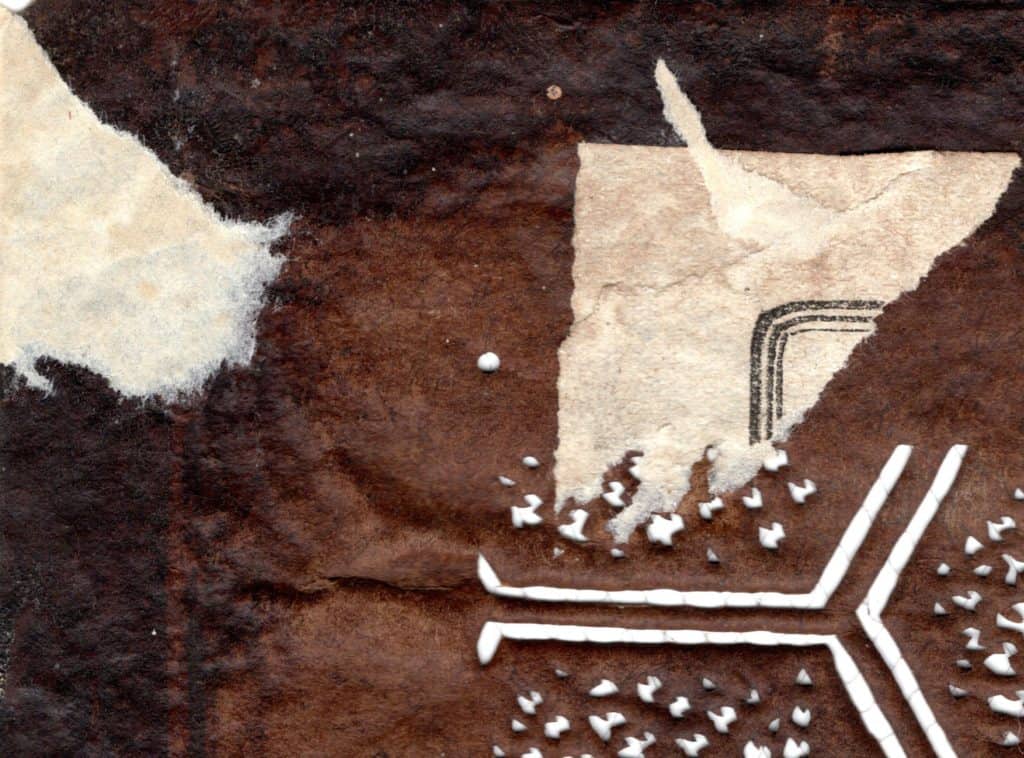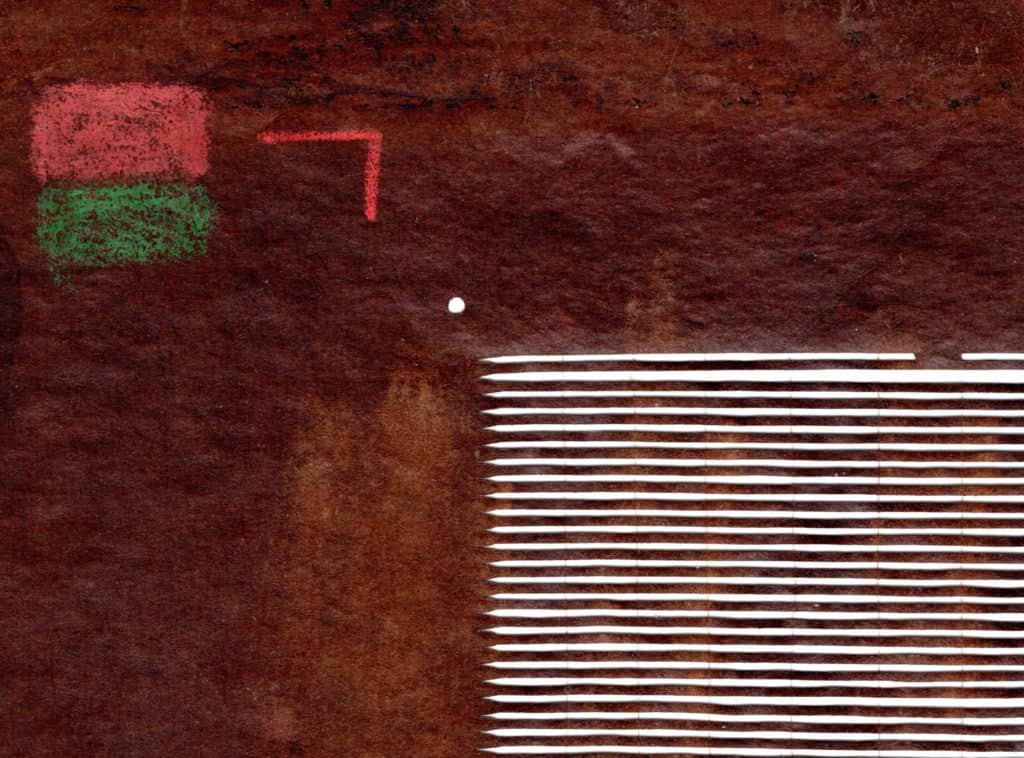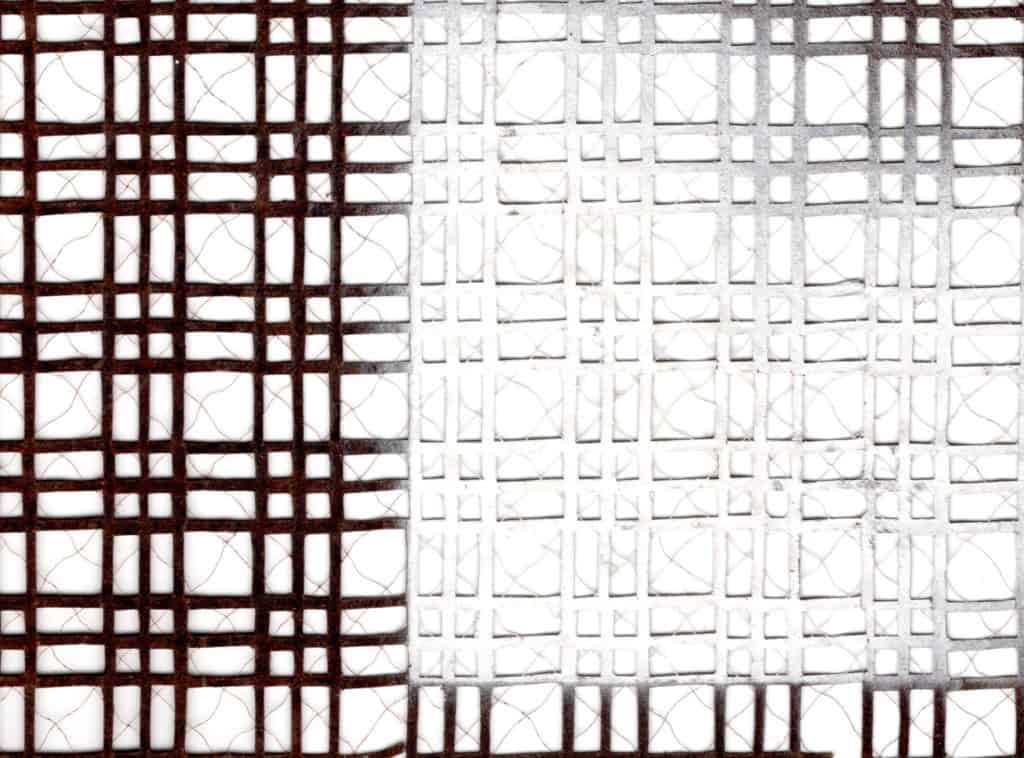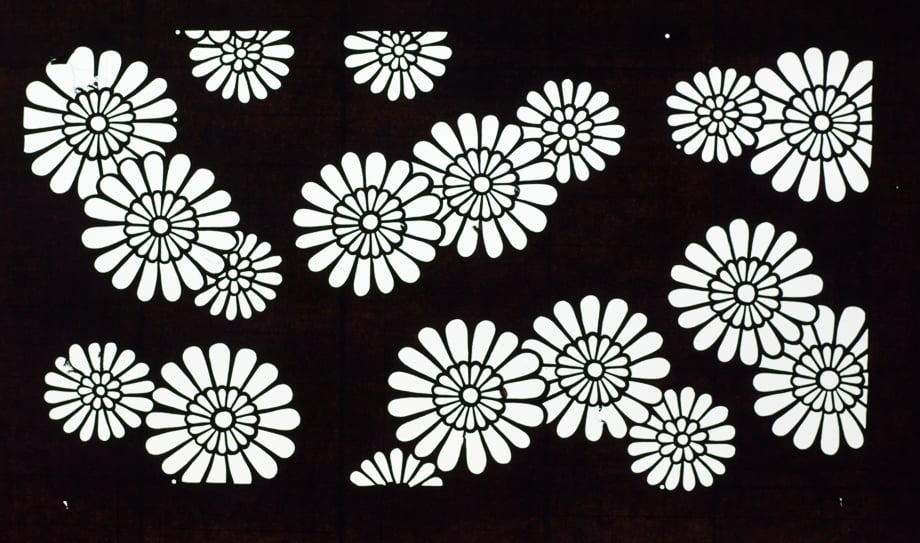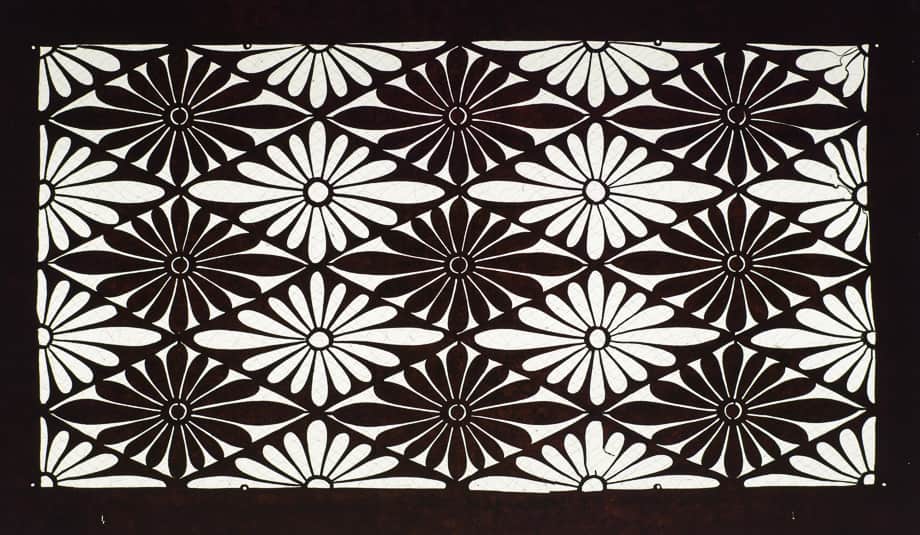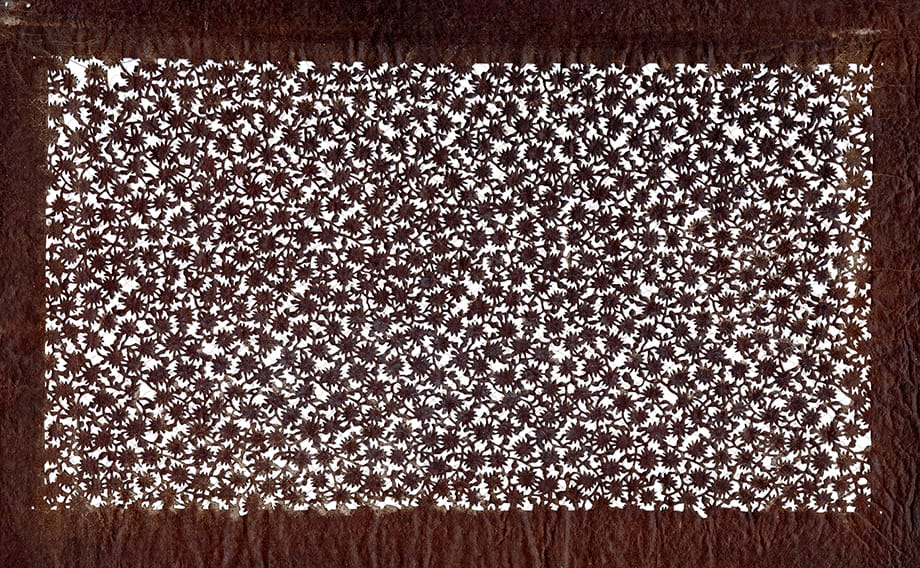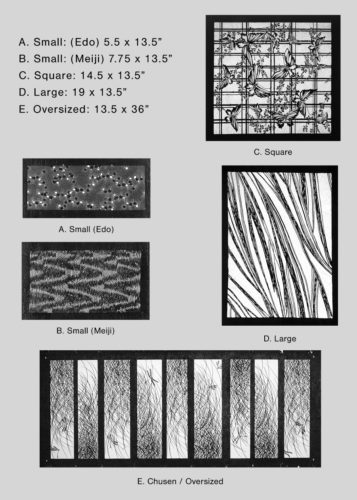Collecting Katagami
Collecting katagami begins like collecting anything: with an object that amazes.
People who find one amazing thing seek out more.
Scope
Consider the scope of your collection. Do you want a small group of things that have similarity so that they sit compatibly on a wall? Or do you want to go encyclopedic with broad examples that show the breadth of katagami? Either creates a criteria for value.
Interest
Is the design compelling? Is the subject interesting?
I marked some examples “rich textures” meaning multiple techniques are used to build the pattern. These include punched dots of the same size or large and small dots used to build up density of pattern; sculpted stripes in which the stripes get thinner and thicker to create nuances in atmosphere; reversals where a leaf is rendered in light with dark lines and another dark with light lines; naturalistic rendering and graphic lines are often contrasted against stylized depiction. All of these add interest and complexity to a design.
Execution
Elegance in carving is as visible as lack of mastery. Some say stripes are the most difficult patterns to execute because the tiniest shift of the knife is instantly visible in both positive and negative space. Look for this in the patterns. How does the line flow?
Condition
Condition is not as obvious to assess as you might think when it comes to katagami. These are tools. They show a patina of human use. That patina can enrich the visual quality of the design paper. It can also take away from the consistency of the pattern and overall look.
Each katagami stencil in the collection has been graded for condition from 1-11.
1: Pristine – These patterns were never used to print. They are perfect as the day they were made.
11: Unstable (not for sale) – in which essential portions of the pattern are lost or the paper has become brittle and doesn’t hold together.
There are some interesting stops in between: #5 is wabi sabi in which a break in the pattern is stitched back together by the dyer so the print run can be completed.
I love these marks, the pull of the threads and the buckling of the paper until it takes on the color and feel of nori. I was at a museum recently looking at katagami and pointed at a framed piece. “That doesn’t look right. What happened?” The curator told me that the preparators had “arranged” the threads because they were uncomfortable with the natural fall of tearing. Pull and tear give physical presence to how these were used. You can see the path of the printer’s hand as it pressed against the pattern, pushing the paste into the stencil. Don’t mess with it. Or work with pieces that are unused. Either way, there is a weaving back and forth between the stencil as it entered the world and what it looks like after one or two or one hundred printings. For me all are valid, all are history.
There are other marks on katagami that serve as a living curriculum vitae. Dyers etch notes in the margins, sometimes with ink, sometimes in punched dot figures. Ink residue from testing a pattern shows on the surface of some. Almost all have marks on the back that track past ownership. There are tabs on corners with a scrap of Japanese newspaper. Some came backed in French hand blocked wallpapers samples from the 1950s. There are museum captions and bits of tape and prices noted in francs tracking works from creation to print to sale as artifact, and on to further transfers, just like labels on a steamer trunk.
Japanese design papers are intensely made objects with material heft. Get a feel for these stencils. Collecting is an intimate affair. My aesthetic evolves and my affection deepens with every day I spend with katagami.
Composition Types
There are four compositional formats that each have very different visual presence. Knowing these can help generate continuity and variety when collecting katagami.
Dark Ground — in a dark ground stencil the page is dark with forms and lines cut away to print as white. View all.
Light Ground — A light ground stencil is the opposite, the field is open and will print as light. Lines and forms are crafted by shaping the remaining paper. View in catalog. View all.
Reversing Ground — reversing ground is when passages of light ground and dark ground balance each other. Often these take on the shape of river and shore or are used to create larger overall forms like diagonal stripes or loose checks over several repeats in printing. View all.
Allover — allover format stencils are dense, repeating patterns like stripes or checks define that the entire field. View all.
Sizes
Katagami adhere to some general sizes. Here is a diagram of the most common repeat patterns with dimensions of each. Measurements refer to the size of the pattern window, not the size of the sheet. To simplify closely related sizes have been unified into single categories. If you are an aficionado interested in Sansun Okuri Komon but definitely not chugata of the same type, send me a note and I will measure stencils that interest you.
Here are some general characteristics that define sizes:
Stencil sizes expand with the size of the pattern, which in turn tend to increase as the style moves towards modernity.
The finest, most dense patterns tend to be the smallest and earliest. A larger window would cause the paper to break down in printing. Add an inch to this sharkskin and the tension of printing would tear it apart. Stencil sizes expand as patterns move to larger, more spacious motifs and new strategies of reinforcement are invented to accommodate the design direction. In the 20th century, machine-made mesh was introduced and laminated to the stencil allowing for more durable, larger, open patterns.
The pattern types noted are formats used in repeat patterns for dying bolts of cloth.
Stencil width is slightly larger than the weave of the cloth at the time.
The height of pattern changes based on the length of the repeat, which is to say, stencils get bigger when they depict big things. The earliest, most dense patterns are from the Edo period (1603-1868), when the pattern repeats were limited to about 5″.
Small Types
Small ‘Edo’ type [5.5″ x 13.75″] — a classification for the purpose of this website. It is a composite format typically used for repeat patterns during the Edo period and earlier. This type encompasses the “three sun” repeat formats such as ‘komon’ stripes and chugata. In the Meiji Period (1868-1912) pattern length grows to 19 inches for common use. The Taisho Period (1912-1926) follows with even larger formats, as much as three feet for over-sized patterns, and the introduction of machine made silk mesh which allows for open white spaces and free floating elements.
Small ‘Meiji’ type [7.75″ x 13.5″] or [8.75″ x 13.5″] — comprises a small format typically used during the Meiji period like ‘chuban’ and ‘koban.’
Large & Square Types
Large [18.5″ x 13.5″] and Square [14.5″ x 13.5″] — lean towards Meiji with lots of open space. Light ground examples are rare, as they break more easily in printing. The collection is especially strong in this area. Some are also marked ‘medium’ for a not quite square size 11.5″ x 13.5.”
Oversize ‘Tengui_Ban’ [36″ x 13.5″] — reinforced with silk mesh laminated on to one side.
Miscellaneous Types
The general types noted above are repeating patterns used to print bolts of cloth while the types below tend to be single-object non-repeating images.
Shop Signs — unique patterns often used only once to print a cloth sign to hang outside a shop or the cotton banners you bow under to enter a restaurant.
Spot Stencils [8″x 4″] — small, single-subject stencils used to place a pattern on a silk kimono, for example. The pattern could be printed in colored dye or used as a guide for embroiderers. Many such object designs might be applied to create a complex scenario.
Tea Towels [20″ x 11″] — longer, thinner patterns used to print small pieces of cloth used as gifts, usually in the kitchen, and may also be used to wrap gifts or place over a tray. Designs tend to be topical. They might depict a current event, the season or public and private occasions.
